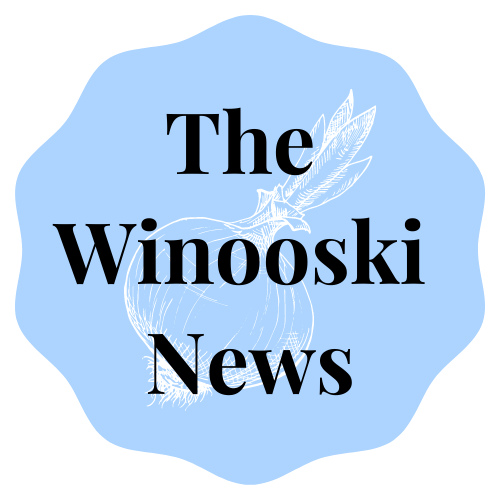City Council Candidate Profiles | Matt Crawford
Seven candidates are vying for two open seats on the Winooski City Council this Town Meeting Day. The top two vote-getters will be elected to two-year terms. This election will be the first in the city to allow non-U.S. citizens the right to vote, a result of an amendment to Winooski’s charter that ensures that all residents can have a voice in municipal elections.
These interviews have been lightly edited for length and clarity.
Matt Crawford (he/him)
Q: How old are you and how long have you lived in Winooski?
I'm 56. I grew up in the area—I’m a St. Albans native. We moved to Winooski and settled here in November 2020.
Q: What is your educational background?
I went to the University of Colorado for Journalism.
Q: What’s your profession and work background?
I was a writer at local newspapers, including the [Burlington] Free Press, for a long time—and then one of the smartest things I ever did in my life was realized that newspapers were going to die probably before I was. So, I got out of newspapers and went into public relations work for a small public relations firm. And in 2020, hung out my own shingle—so now I do public relations, content creation, and copywriting here in Winooski. I was on the Select Board [In Georgia, Vermont] for six years, the last two and a half or so as chairman. So, I’ve got some background in municipal government.
Q: Why are you running for Winooski City Council?
I have known a couple of people that are involved in local government through different avenues, and was sort of looking for a way to get involved in the community. And I felt like my municipal government background in Georgia applies here. Yeah, there are some certain differences, but at its core, there are a lot of commonalities in Vermont local governments, from town to town.
Q: What do you see as the most important issue facing the city of Winooski?
What’s most important, I think really, for Winooski right now, is hiring a City Manager that’s ready to move Winooski forward. I think that’s the number one thing that has to be done, and then all those other issues we can talk about: federal COVID money, affordable housing, long-standing infrastructure projects that that cannot be ignored, developing a budget for the next few years. All that stuff falls in place once we get a city manager that that has the wherewithal, the drive, to sort of move the city forward. But my pet project—we're really fortunate, I think, in Winooski to have non-residents be part of the voting process. And my experience in local government in Georgia, is that local government, particularly Vermont local government, is really a Byzantine process. I mean, it's hard enough for people who've lived here for generations to figure out how local government works, what branch of local government they're supposed to go through—from everything from building a deck on their back on their home to opening a business. So, I would really like to work on a way to make local government approachable for first Americans, and non-resident voters.
Q: Winooski has an acute housing crisis. What ideas do you have for creating more affordable housing?
I think one thing that that Winooski really needs to be aware of is that we have to make sure Winooski has affordable housing, and that the bad actors in this area’s rental market don't make money with their lousy business practices in this city.
Q: Winooski is scheduled to receive $2 million in American Rescue Plan funding. How would you like to see that money spent?
I’m very impressed that the City of Winooski has already held a listening session for community members to weigh in with their suggestions and thoughts. That’s a great first step to make sure every opportunity to spend about $2 million over the next two years is explored. I think a good framework is to use the money creatively through four main themes: Equity and community reliance (Includes increases affordable housing and renter protections); economic recovery for small businesses (Could include workforce development. Must include historically underserved community members); Environmental resilience (Includes long-lasting infrastructure work needed to handle to the increased demands of growth and climate change); Public Health (Expand opportunities and increase access, including mental health assistance).

